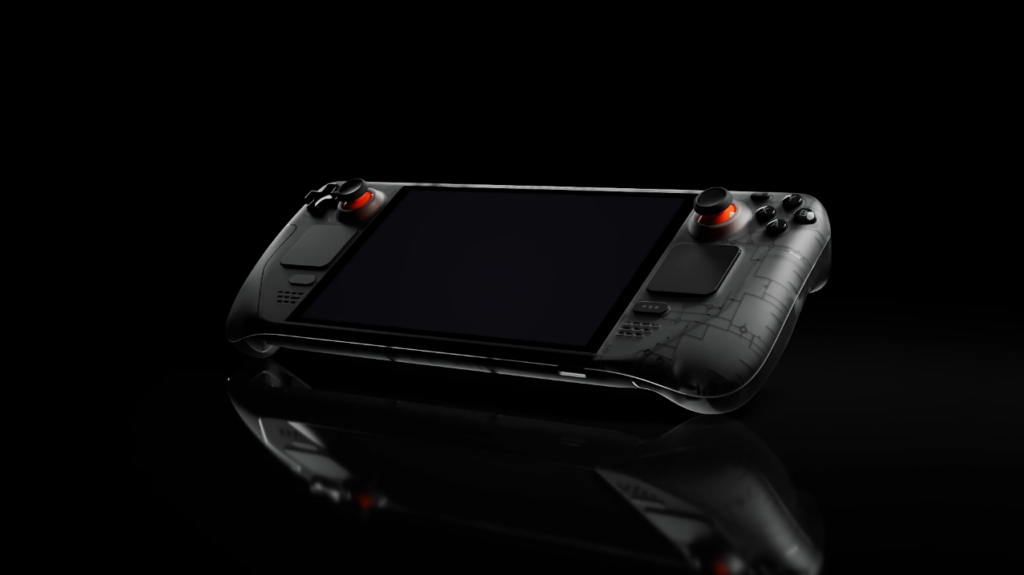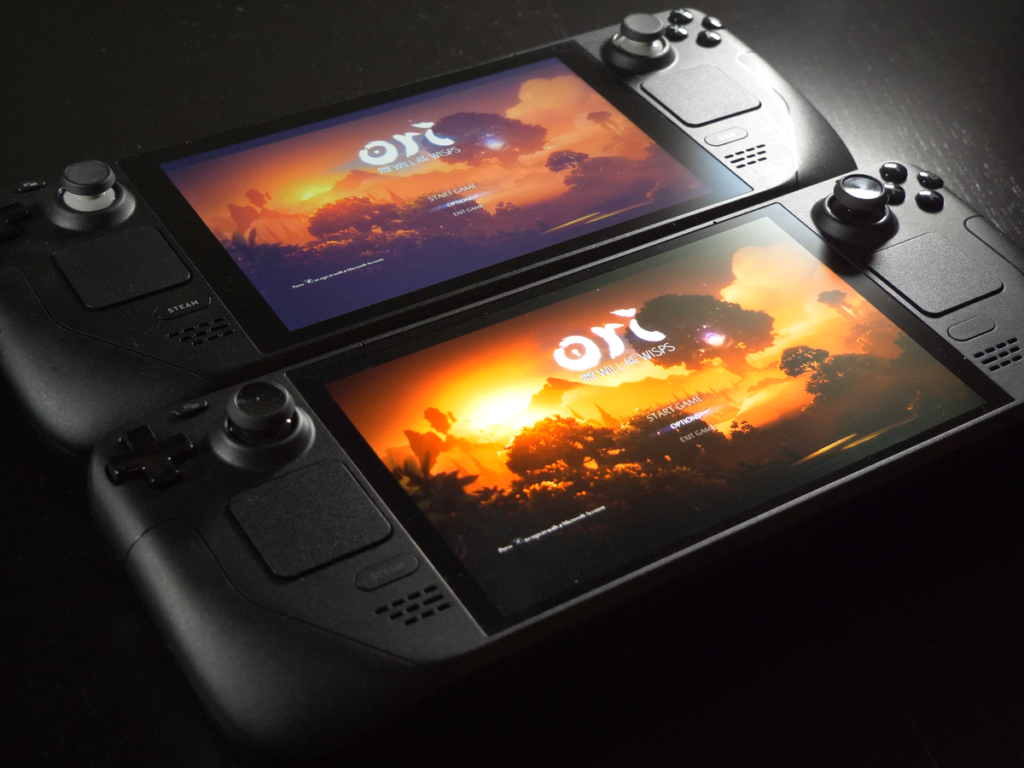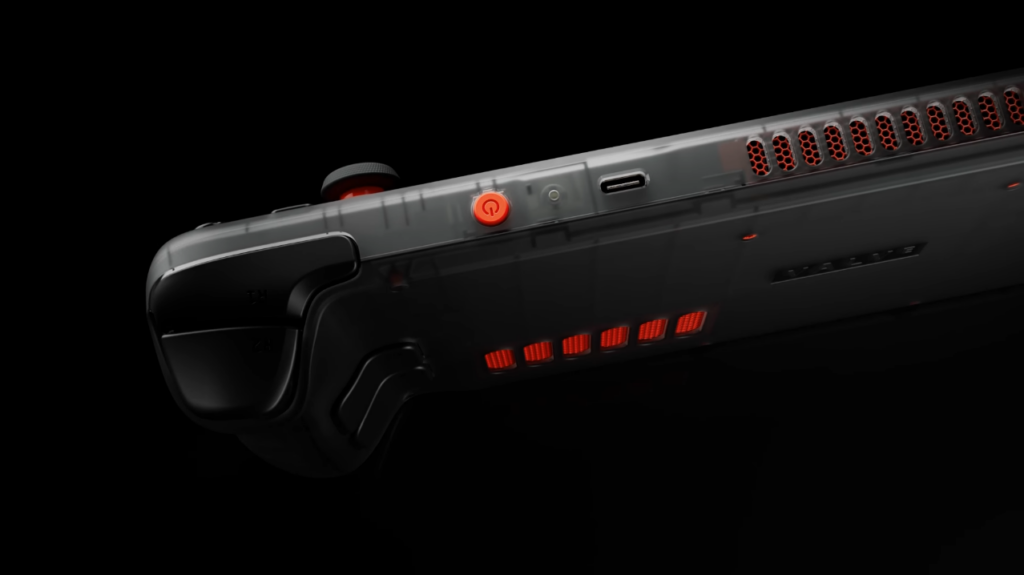3 months ago, on November 16th, the Steam Deck OLED was officially on sale and opened up to be purchased. The new hardware came a little bit earlier than expected, but it brought with it a wealth of changes that justified a new refresh. Sadly, even though it was pretty quick after the launch of the original model, Valve offered no way to trade in or upgrade from an LCD Model to an OLED model, which meant you had to fork over another $500-$600 to get these updates.

As someone who loves OLED displays and higher-capacity batteries, I purchased it as soon as I could. But I am biased, and writing about the Steam Deck is my job. So, after 3 months of using it, I wanted to write about the pros and cons and which new features of the OLED are worth that extra money! While I would personally recommend it, for a plethora of reasons, I am going to try to set aside my bias and be more neutral. This means trying to look at the main upgrades from an outsider's perspective and think about real-world usage instead of my own.
So, with that out of the way, let's take a look at why you should get a Steam Deck OLED, or not!
Yes - The Extra Battery Life
One of the things I love about the Steam Deck is, well, its portability. I can take an entire PC wherever I go, hold it in my hands, and use it however I choose. For this, it needs a battery, and with the OLED, we had an increased battery size from 40Wh to 50Wh. On Windows handhelds, the difference may be negligible, with maybe an hour gained overall, but the Steam Deck uses SteamOS, and it is very battery-friendly.
For major games that drain the maximum possible, we get about an extra hour to an hour and a half of battery life. But, if you aren't draining that large of an amount and are playing a less intensive game, you could see gains of over 2-3 hours. In smaller games like Stardew Valley, I was able to get almost 10 hours of battery life, much higher than the LCD's 7 hours. So, if you prefer taking your device on the go and minimizing charging, which has seen a boost in charging speed as well, I highly recommend this.
Yes - The Weight Difference
When I was testing a game earlier before writing this piece, I decided to try it out on my old LCD Steam Deck to see if I was encountering the same issues that I was on the OLED. As soon as I picked up the device, I felt an immediate difference in the weight, and it made me miss holding my OLED Deck almost instantly.

On paper, the weight difference is pretty negligible. The OLED weighs 640g, while the LCD weighs 669g. It's a 29g difference, which isn't a lot when written down, but if you are holding the device for a long period of time, you will feel the difference. It may not seem like it at first, but I believe you would appreciate the difference as you use it more and more.
Yes - The New Cooling
This is only a Yes based on the games that you play on your Steam Deck, but if you play more intensive games, you will love this. The new cooling system in the Steam Deck OLED works tremendously well, keeping the device much cooler than its LCD counterpart in the same games with the same graphical quality. Even today, I still find myself shocked when I touch the back of the OLED, and it feels relatively cool when I know if I touched the LCD, it would be hotter than I would like.
With reduced temps and better cooling also comes a longer lifespan for the internals. Yes, the Steam Deck LCD is built well and shouldn't experience any hardware degradation based on heat, but if you play a lot of games draining a ton of battery and making the Deck hot on a constant basis, it could happen over time. The OLED is much less likely to have that issue, and I appreciate it for that.
Maybe - WiFi 6E Support for Streaming
More and more, I am seeing cloud streaming becoming prominent. Xbox Game Pass for PC is a big subscription service that uses this technology to give others the chance to play big games without the powerful hardware required. On the Steam Deck, we can't download Game Pass games natively, so we need to rely on cloud gaming, and for that, we need a solid internet connection with decent speeds. And the Steam Deck OLED comes with a better WiFi card to make it significantly better.

If you have WiFi 6E support at home, your Steam Deck will now be able to utilize the 6GHz line, giving you more bandwidth and faster speeds. Both of these can help make cloud streaming so much better and more stable. The LCD Steam Deck only has WiFi 5 support, and with the OLED, you can now utilize WiFi 6 and 6E connections.
This is a fantastic upgrade, and at first, I would consider this a "Yes" that makes the OLED upgrade worth it, but one thing made me put it into the "Maybe" section: Availability. If you have a WiFi 6 or 6E router at home, this upgrade is 200% worth it. However, not everyone has that, which means not everyone will see the difference. WiFi 6E also requires new hardware and isn't something that old ones, even old WiFi 6 routers, can support. Because of that, I would consider it a maybe overall, but if you have a WiFi 6 or 6E router, this is a worthwhile upgrade.
Maybe - The OLED HDR Screen
This is a tough one here. Personally, I love the OLED HDR screen, and I am a sucker for those incredible, vibrant colors and true blacks. I would not hesitate to spend more or exchange an old device I have if it meant I could get one that utilizes OLED technology, and having HDR support is incredible, too. So, you might be wondering why I would put this amazing screen, which helps define the hardware refresh, in the maybe section. Well, because not everyone cares about it.

Image Credit - Eurogamer's Steam Deck OLED Review
Do I see a gigantic difference that I feel is worth spending $500-$600 on? Yes, 100%. But, if you are looking for a more vibrant image, you can change the color saturation and temperature on your LCD Steam Deck, which is a feature that was brought in by SteamOS 3.5. Some people care about the colors, like me, and others are okay with just making it a bit more saturated, and that did the job right before the OLED came around. But there are people who just don't care about it, and for the majority of people, buying a whole new device just for better colors isn't worth $500+.
For my money, it is, and I see a huge difference. But, for the general population of gamers, I would consider this a giant, maybe, depending on how much you want more vibrant colors and true blacks, as well as HDR support.
No - The 90Hz Screen Refresh Rate
The increased refresh rate of the screen is very nice, and I do like seeing the differences between 60Hz and 90Hz in games, but is it really necessary to enjoy games? No. Your games at 60 FPS are going to feel very smooth, and a lot of times, I tend to go down to 60 FPS/Hz anyway on the OLED to save on battery life.
Where the 90Hz does help is input lag, and if you are playing semi-competitive games that require fast reaction times or Dark Souls, this will be much more worth it. But, if you are playing smaller single-player indie games, the differences will be negligible, and I wouldn't say it is worth the extra money that needs to be spent.
No - The Updated Power (APU + RAM)
One of the things Valve updated with the OLED hardware revision is the APU. They made it a bit smaller, using a 6nm process instead of 7nm, and increased the RAM speed to 6400MT/s. Both of these are nice additions to the refresh, but ultimately, it is using the same Zen 2 + RDNA 2 APU to power it, and that means you won't see much if any, power increase.

In Valve's defense, they did this on purpose and didn't want to introduce anything that would dramatically increase power until the next generation of Steam Deck, which could come in 2-3 years. This makes the lack of large performance improvements pretty on par with their overall goal. But, even still, it is worth mentioning that you won't find any extra power to go around here.
But is The Steam Deck OLED Worth It? - Yes, Yes it is
When we separate all the big improvements that could make the upgrade worthwhile, it's easy to say which are worth your time and which aren't. If you want to look at it piece by piece, the section above will be worth your time. But, if you want an answer about the entire device and whether it's worth it, I would say yes, it is worth the upgrade.
Putting all of the above into a single package is extremely enticing, and for my money, the OLED HDR screen with the extra battery life is what won me over in the end. I love the vivid colors and true blacks of the OLED screen and mix in HDR support, and a larger battery that runs on the wonderfully optimized SteamOS, and you have a match made in heaven.
If you don't have a Steam Deck yet, the OLED is the obvious choice, but if you already have a Steam Deck LCD, the upgrade may seem like a bit too much. Luckily, the Steam Deck is a hit, and Valve will more than likely continue to support it via software and new hardware revisions in the coming years. So, if you are happy with the performance and don't care much about the better screen, you can rest assured in your decision to stick with the older model.
If you enjoyed this article, check out the rest of the content on SteamDeckHQ! We have a wide variety of game reviews and news that are sure to help your gaming experience. Whether you're looking for news, tips and tutorials, game settings and reviews, or just want to stay up-to-date on the latest trends, we've got your back.









It is not worth the upgrade. It is worth it as an original purchase i.e. worth the difference in price.
This is a good summary of the benefits, and people can make their own choices from it. But I do not see this as a recommendation for most people.
I purchased an oled because I decided 2 SteamDecks would be beneficial (and has been).
One thing I don't see mentioned enough about the screen upgrade is the polarization. The OG LCD steam deck is polarized vertically. This doesn't mean anything until you try to play a game outside wearing sunglasses, at which point you can't see the screen (unless you hold the deck vertically). The OLED fixes this and polarized horizontally. This alone made the upgrade worth it for me.
Lol, no, it is not worth it, not in the slightest. Steam Deck is a niche handheld and best thing is their money/performance vs other handhelds with higher end apus.
Best thing is to buy the cheapest lcd when it is on sale, and buy 1 tb or 2tb SSD available for 40$, and have a 400$ handheld good for emulating and low performance games. Also, there is no need to tinker with tdp, say whatever you want, you know that most people use it always at home, so you can plug it and forget about that crap being able to use the best performance it can offer because it is not much compared to a desk PC.
I find funny because I'm into niche handhelds since GPD XD, that's about 8 years ago? People this this is something new. Truth to be told, I find my self more time streaming from my Windows Desktop PC, not high end but good enough to play every AAA game and not needing to tinker all the time with launcher, proton forks, unable to easy mod games etc...
Sounds like you might not be the target audience for the steam deck. And that's okay.
A 2230 2tb is 140, if you're going to put lots of hours on it, the OLED is worth the extra $$, if it's going to be rarely used, get the lcd
On the 90Hz portion you are forgetting the little bump to the new standard: 45fps, and how the screen can remain at 90Hz, it really feels way better than 40fps at 40Hz.
That's fair! Though some games are still best at 40 due to battery saving or power limitations.